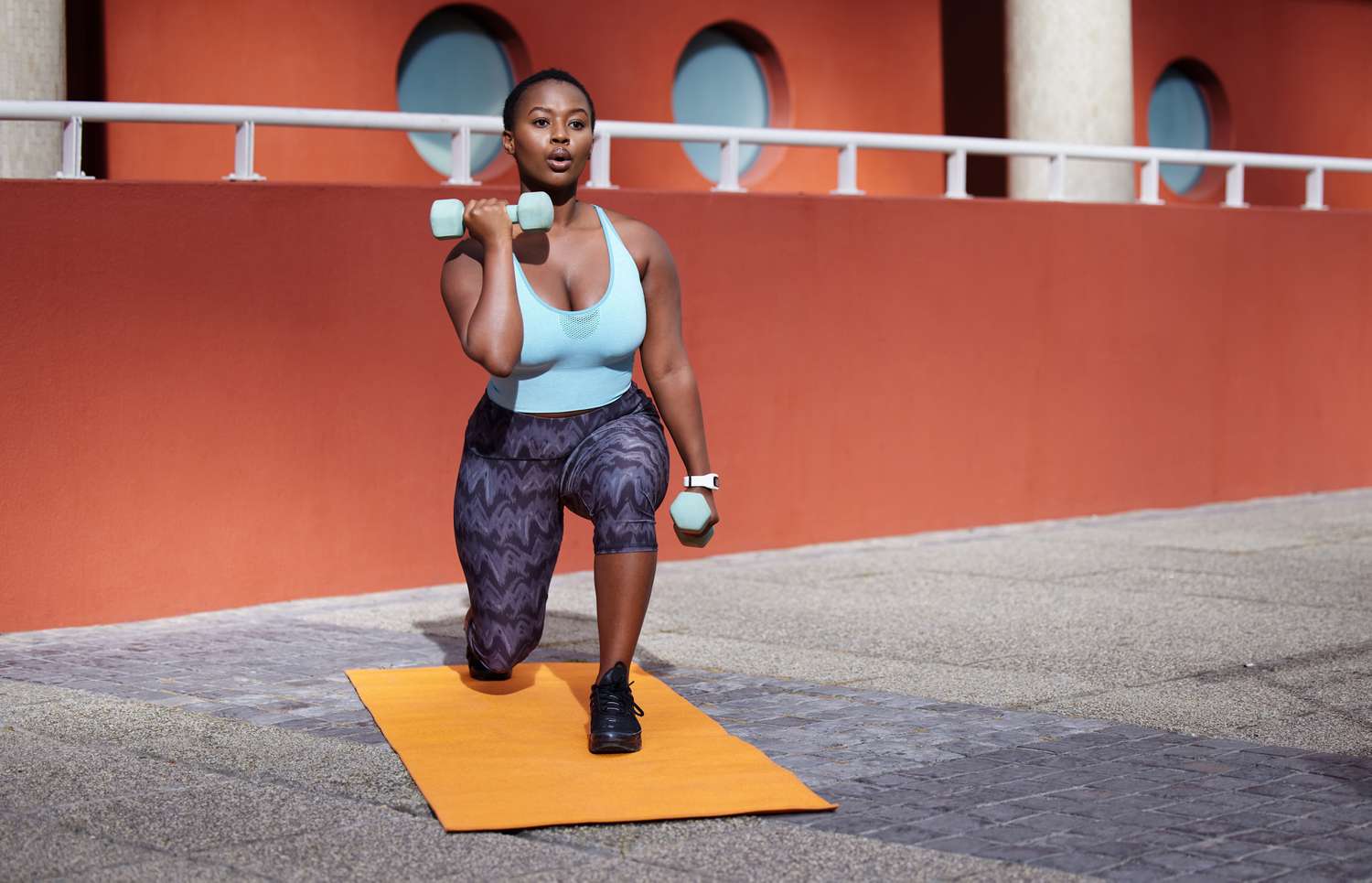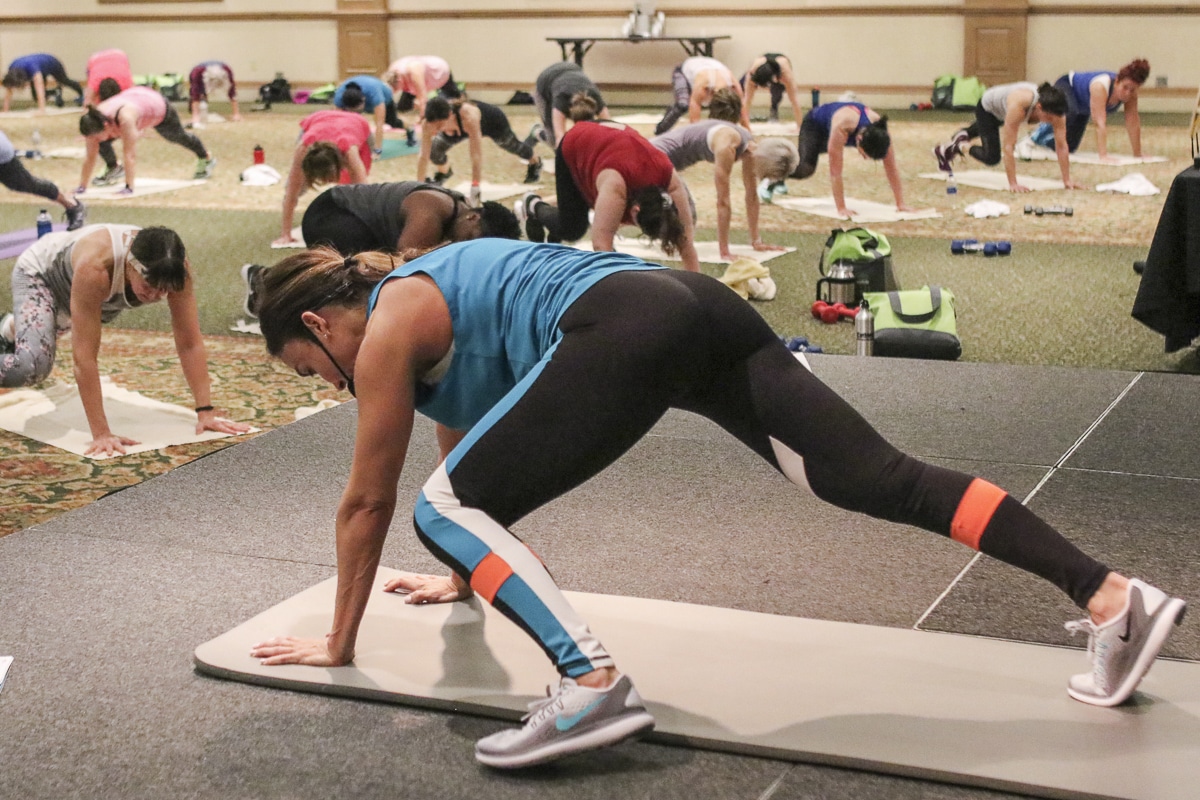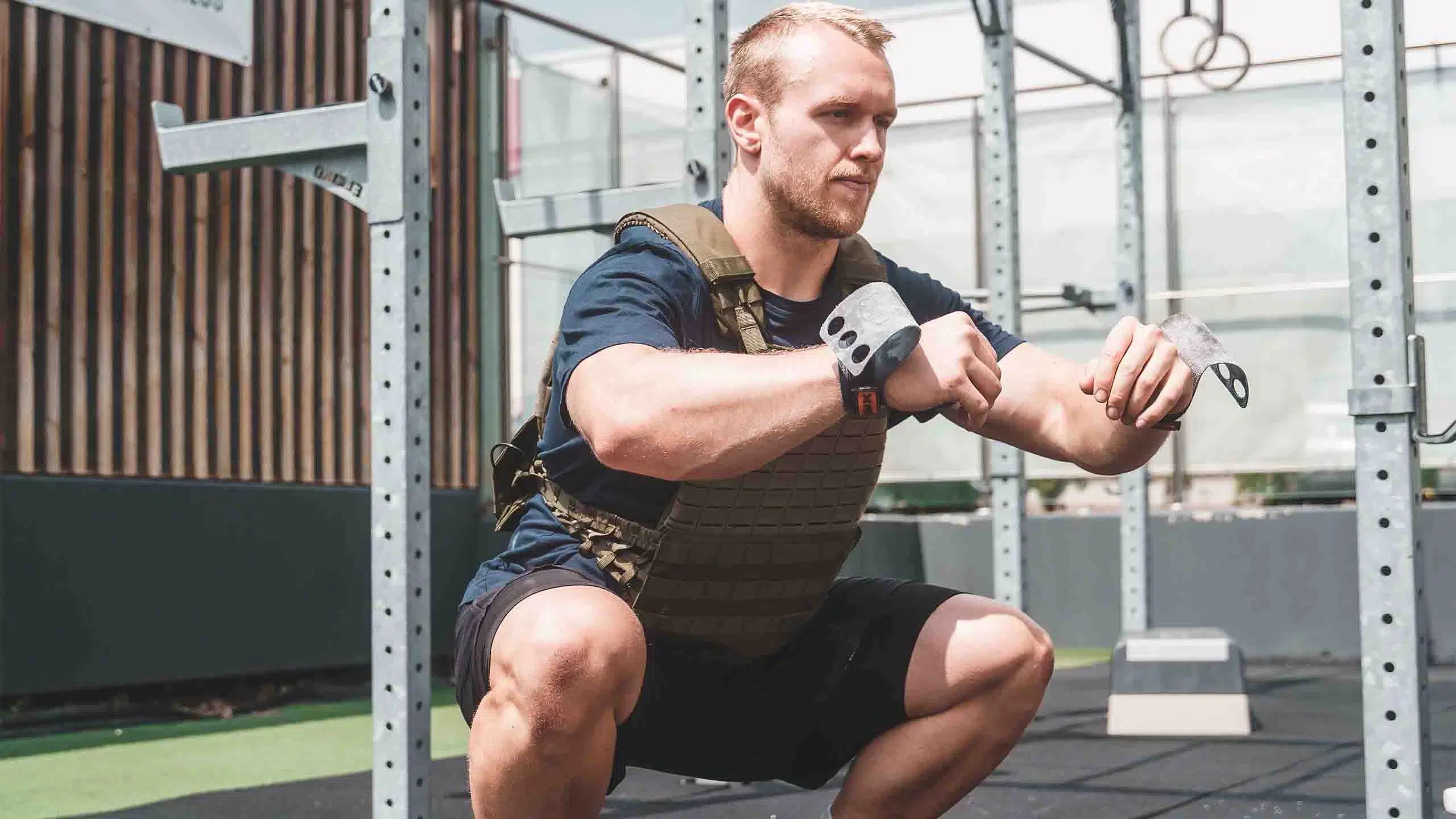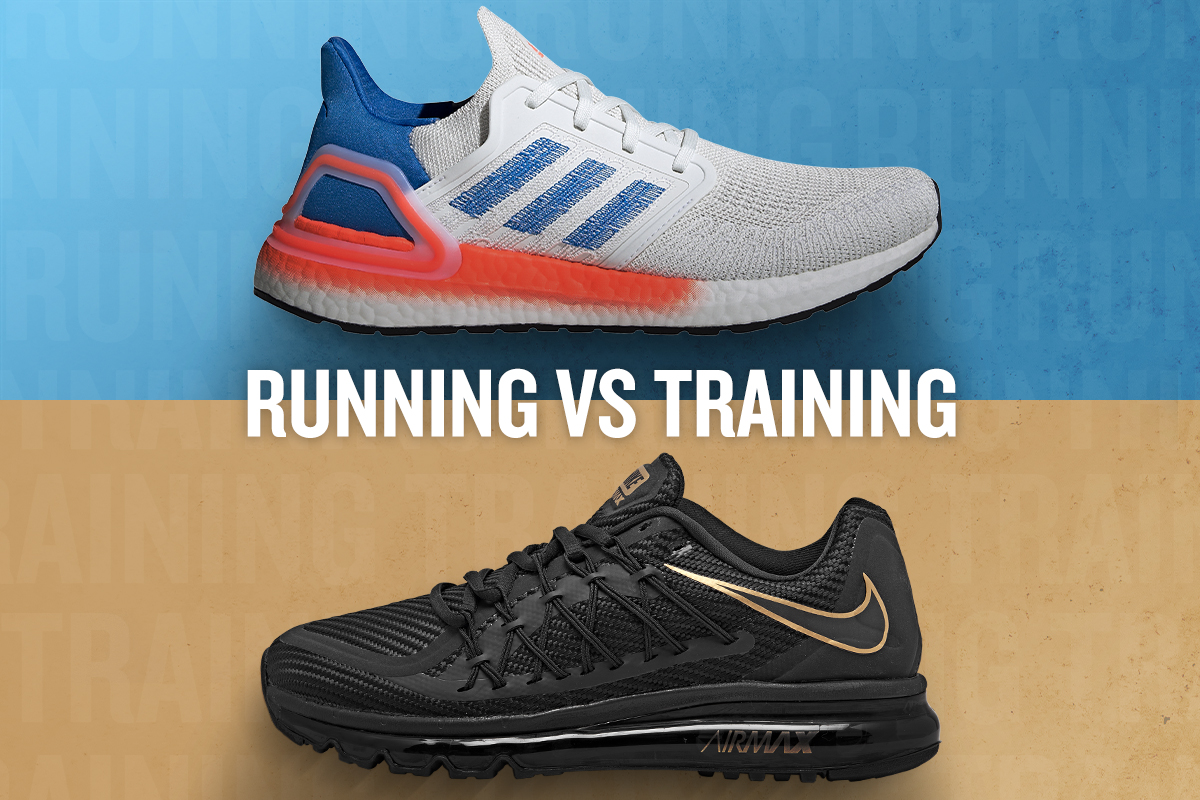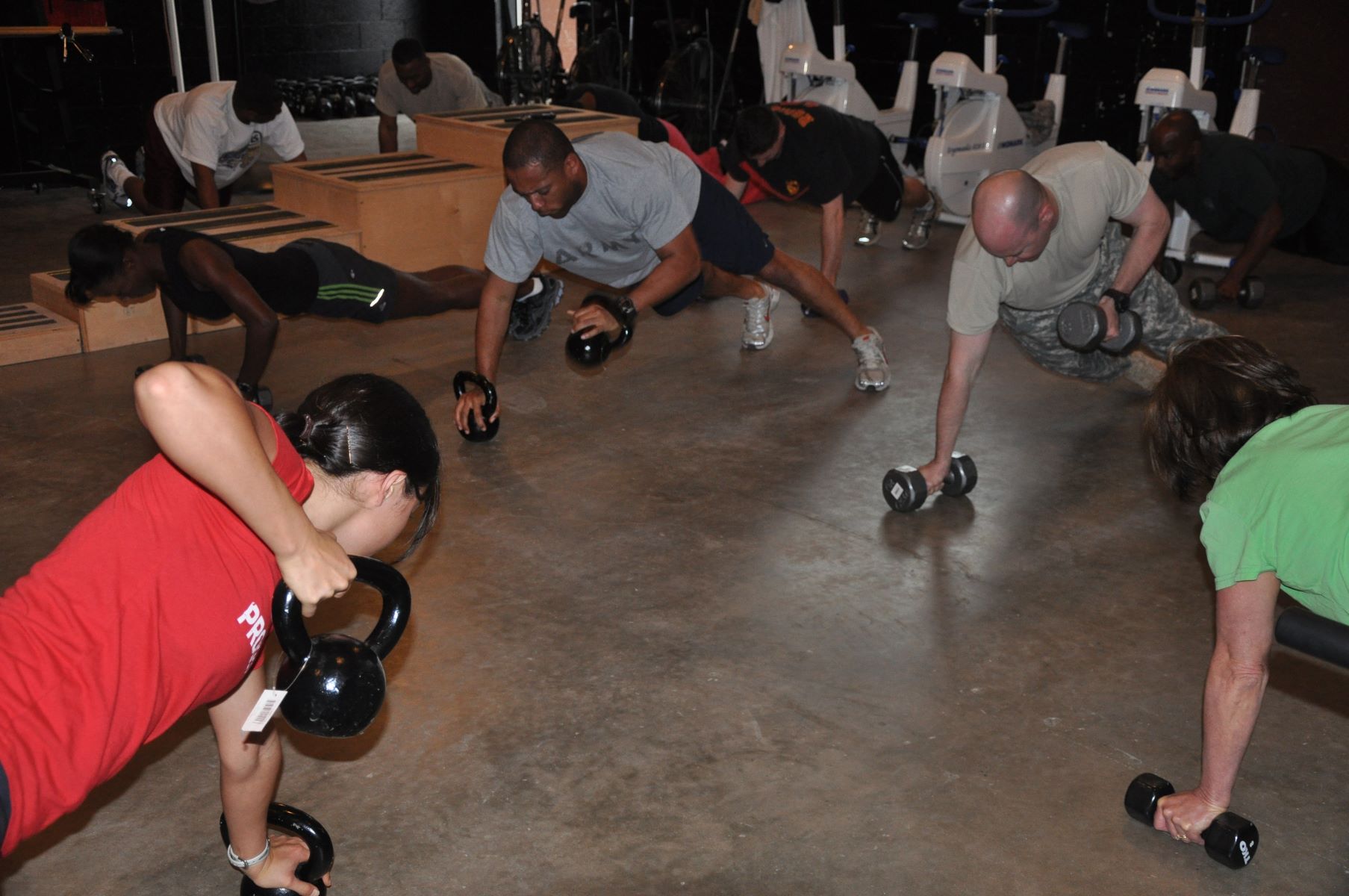

Featured
How To Improve CrossFit Endurance
Modified: January 22, 2024
Improve your CrossFit endurance with these featured tips and techniques. Enhance your performance and reach your fitness goals with our expert guidance.
Introduction
Welcome to our comprehensive guide on how to improve your CrossFit endurance. Whether you’re an experienced CrossFitter or just beginning your fitness journey, having good endurance is crucial for performing well in a wide range of physical activities. CrossFit, known for its high-intensity workouts that combine elements of strength training, cardio, and functional movements, requires a strong level of endurance to sustain performance throughout the workouts.
Endurance is the ability to sustain prolonged physical activity and is a key component of overall fitness. It allows athletes to push through fatigue, maintain energy levels, and achieve optimal performance. CrossFit endurance training focuses on building both cardiovascular stamina and muscular endurance to enhance performance across various domains.
CrossFit workouts often involve activities such as running, rowing, biking, and other aerobic exercises, along with weightlifting and bodyweight movements. By improving your endurance, you’ll be able to handle longer workouts, maintain intensity, and recover faster, ultimately improving your overall CrossFit performance.
In this guide, we’ll walk you through the process of assessing your current endurance level, setting goals for improvement, and implementing effective training techniques specific to CrossFit endurance. We’ll also discuss the importance of nutrition, recovery, and rest days in your overall journey of improving endurance. By the end of this guide, you’ll have a solid understanding of how to optimize your endurance and take your CrossFit performances to the next level.
Importance of CrossFit Endurance
Endurance is a critical component of CrossFit training as it directly impacts your ability to perform well in workouts and achieve your fitness goals. Here are a few key reasons why building and improving CrossFit endurance is crucial:
- Increased Work Capacity: CrossFit workouts are designed to challenge athletes in multiple domains, such as cardiovascular stamina, strength, and endurance. Improving your endurance capacity allows you to sustain higher workloads for longer durations, enabling you to complete more repetitions, move heavier weights, and perform at a higher intensity.
- Better Metabolic Conditioning: CrossFit places a significant emphasis on metabolic conditioning, the ability to efficiently utilize energy systems during exercise. By enhancing your endurance, you improve your body’s ability to utilize and deliver oxygen to working muscles, optimizing energy production and reducing fatigue.
- Improved Cardiovascular Health: Endurance training has numerous benefits for cardiovascular health, including reducing the risk of heart disease, improving heart and lung function, and enhancing circulation. CrossFit endurance workouts, which often involve high-intensity cardiovascular exercises, provide an excellent opportunity to strengthen your cardiovascular system.
- Enhanced Recovery: Building endurance helps improve your recovery between workouts. As your body becomes more efficient at delivering oxygen and clearing metabolic waste products, you’ll experience shorter recovery times and reduced muscle soreness, allowing you to bounce back faster and train consistently.
- Increased Mental Toughness: Endurance training challenges not only the physical body but also the mind. Pushing through fatigue and discomfort during long workouts builds mental resilience, discipline, and determination, qualities that can transfer to other aspects of life outside of the gym.
By prioritizing CrossFit endurance training, you position yourself to excel in the various physical demands of CrossFit workouts and improve your overall fitness. Whether you’re aiming to compete in CrossFit competitions or simply want to elevate your training performance, improving your endurance capacity is essential.
Assessing Your Current Endurance Level
Before embarking on your journey to improve CrossFit endurance, it’s important to assess your current level of endurance. This will help you establish a baseline and set realistic goals for improvement. Here are a few methods to gauge your endurance:
- Performance in CrossFit WODs: One of the best ways to assess your endurance is to evaluate your performance in CrossFit workouts of the day (WODs) that include cardiovascular exercises. Take note of how long you can sustain intensity, how quickly you fatigue, and how well you recover between sets or intervals.
- Timed Runs or Rows: Perform a timed run or row to measure your endurance capacity. This could be a set distance, such as a 1-mile run or a 2k row, or a time trial for a specific duration. Record your time and use it as a benchmark for future assessments.
- Heart Rate Monitoring: Utilize a heart rate monitor during your workouts to monitor your heart rate response to different activities and intensities. This can provide valuable insights into your cardiovascular fitness and help you track improvements over time.
- Cooper Test: The Cooper test is a popular method to assess overall endurance capacity. It involves running as far as you can in 12 minutes. Note the distance covered, as it reflects your aerobic fitness level.
It’s important to perform these assessments in a controlled and safe environment to accurately gauge your endurance level. Keep in mind that everyone’s starting point is different, and comparing yourself to others may not be productive. Focus on your individual progress and strive to improve at your own pace.
By evaluating your current endurance level, you can identify areas of weakness and set specific goals for improvement. This self-awareness sets the foundation for designing an effective training plan that addresses your individual needs and helps you progress steadily.
Setting Goals for Improvement
Once you have assessed your current endurance level, the next step is to establish clear and achievable goals for improvement. Setting specific goals will help you stay focused, motivated, and measure your progress along the way. Here are some tips for setting effective endurance goals:
- Be Specific: Clearly define what you want to achieve. Instead of a general goal like “improve endurance,” specify a target such as running a 5k in under a certain time or completing a specific number of rounds in a time-based CrossFit workout.
- Set Realistic Targets: While it’s important to challenge yourself, make sure your goals are attainable within a reasonable timeframe. Consider your current fitness level, time availability, and other commitments when setting your targets.
- Break It Down: Divide your larger endurance goal into smaller, manageable milestones. This makes the journey more achievable and allows you to celebrate progress along the way. For example, if your goal is to run a 10k, you could set milestones for running 3k, 5k, and 8k before reaching the ultimate 10k goal.
- Make it Measurable: Define specific metrics to track your progress. It could be time, distance, repetitions, or any other quantifiable factor related to your endurance goal. This allows you to objectively assess your improvement and adjust your training as needed.
- Set a Timeline: Establish a timeframe for achieving each milestone or the overall goal. This adds a sense of urgency and accountability, preventing procrastination and keeping you motivated to work consistently towards your targets.
- Write It Down: Document your goals in a journal or on a vision board. Writing them down helps solidify your commitment and serves as a reminder of what you’re working towards. Additionally, regularly review and reflect on your goals to stay focused and motivated.
Remember, goal-setting is a personal process, and what works for one individual may not work for another. Tailor your goals to your own aspirations, abilities, and circumstances. Stay adaptable and be willing to adjust your goals as you progress and encounter new challenges.
By setting specific, measurable, and realistic goals, you create a roadmap for improving your CrossFit endurance. This clarity will guide your training efforts and provide a sense of direction as you strive to reach new heights in your fitness journey.
CrossFit Endurance Training Techniques
Improving CrossFit endurance requires a targeted approach that combines cardiovascular exercises, strength training, and high-intensity interval training (HIIT). Here are some effective training techniques to enhance your endurance capacity:
- Long Duration Cardio: Incorporate longer duration cardiovascular exercises, such as running or biking, into your training regimen. Aim for steady-state workouts lasting 30 minutes to an hour, gradually increasing the intensity and duration over time. This builds aerobic capacity and teaches your body to sustain effort over an extended period.
- Interval Training: HIIT workouts are highly effective for building endurance. Alternate periods of high-intensity exercise with periods of rest or lower intensity. For example, perform a series of 30-second sprints followed by 60 seconds of active recovery. Repeat this cycle for a set number of rounds. This method improves both aerobic and anaerobic endurance while boosting calorie burn.
- Circuit Training: Combine cardiovascular exercises and strength training in a circuit format. Design a workout that includes a mix of bodyweight exercises, weightlifting movements, and cardio elements, such as burpees, box jumps, and kettlebell swings. Perform each exercise for a set duration or number of repetitions, moving from one exercise to the next without rest, and repeat the circuit multiple times. This type of training challenges both muscular endurance and cardiorespiratory capacity.
- CrossFit WODs: Participate in CrossFit workouts that feature endurance-focused movements and exercises. Look for workouts that involve running, rowing, or biking, combined with other functional movements. CrossFit WODs are designed to challenge your endurance in various ways and provide an opportunity to push your limits.
- Accessory Work: Include accessory exercises that target specific muscle groups involved in endurance activities. This could include exercises like lunges, step-ups, and kettlebell swings, which improve lower body strength and power transfer. Strengthening these areas helps improve overall endurance and prevents imbalances that can hinder performance.
Remember to vary your training methods to prevent plateaus and ensure balanced development. Incorporating a mix of longer duration steady-state cardio, HIIT, circuit training, and CrossFit WODs will provide a well-rounded endurance training program.
Additionally, prioritize consistency in your training. Aim for regular workouts, gradually increasing the volume and intensity over time. Consistency is key when it comes to improving endurance. Listen to your body and allow for adequate recovery to prevent overtraining and reduce the risk of injury.
Be patient and persistent in your training. Building endurance takes time and effort. Embrace the challenge, stay positive, and trust in the process. With consistent training and dedication, your CrossFit endurance will improve, allowing you to perform at your best in any workout or competition.
Incorporating Cardiovascular Exercises
Cardiovascular exercises play a crucial role in improving CrossFit endurance. These exercises elevate your heart rate, increase oxygen delivery to working muscles, and enhance your body’s ability to utilize energy efficiently. Here are some tips for effectively incorporating cardiovascular exercises into your training routine:
- Choose a Variety of Modalities: CrossFit workouts often include running, rowing, and biking, but don’t limit yourself to these options. Explore different modalities such as swimming, jumping rope, or using the stair climber to challenge your cardiovascular system in different ways and keep your workouts engaging.
- Adjust Intensity and Duration: Vary the intensity and duration of your cardiovascular workouts. Incorporate both longer, steady-state workouts to build endurance and shorter, high-intensity intervals to improve speed and power. Adapt the intensity based on your goals, focusing on pushing yourself within your capabilities.
- Progress Gradually: Start at a comfortable intensity and gradually increase the duration, intensity, or volume of your cardiovascular exercises over time. This progressive overload allows your body to adapt and improve without risking injury or burnout.
- Include CrossFit-style Cardio Workouts: Participate in CrossFit workouts that have a strong focus on cardiovascular conditioning. These workouts often involve a combination of cardio exercises and functional movements, challenging both endurance and strength. Look for WODs that include activities like running, rowing, or double-unders.
- Combine Cardiovascular Exercises with Strength Training: Incorporate cardiovascular exercises as a warm-up or cool-down before and after your strength training sessions. This will enhance blood flow to muscles, improve recovery, and ensure a well-rounded training session.
- Embrace Outdoor Training: Take advantage of outdoor spaces and incorporate exercises like trail running or hill sprints. The varied terrain and natural elements add an extra challenge to your cardiovascular workouts and help simulate real-world conditions.
- Monitor Your Heart Rate: Consider using a heart rate monitor to track and optimize your cardiovascular training. This allows you to stay within the desired target heart rate zones for specific training goals, such as fat burning or aerobic conditioning.
Remember to listen to your body and choose cardiovascular exercises that you enjoy. Making your workouts enjoyable increases adherence and makes it easier to incorporate them into your routine consistently. Aim for a balanced mix of cardiovascular exercises to target different energy systems and challenge different muscle groups.
Lastly, be mindful of proper form and technique during cardiovascular exercises to maximize efficiency and prevent injury. If you’re unsure about proper form or training techniques, consider consulting with a certified CrossFit coach or fitness professional to ensure you’re performing the exercises correctly.
By incorporating a variety of cardiovascular exercises into your training regimen and progressively challenging yourself, you’ll steadily improve your CrossFit endurance and unlock new levels of fitness and performance.
Developing Muscular Strength and Stamina
Building muscular strength and stamina is essential for improving CrossFit endurance. Strong muscles are better equipped to handle the demands of high-intensity workouts and sustain performance over extended periods. Here are some effective strategies for developing muscular strength and stamina:
- Compound Lifts: Focus on compound exercises that target multiple muscle groups simultaneously. Movements like squats, deadlifts, bench press, and overhead press engage large muscle groups and build overall strength. Incorporate these exercises into your training program to improve muscular endurance and functional strength.
- Progressive Overload: Gradually increase the resistance, volume, or difficulty of your strength training workouts. This progressive overload stimulates muscle growth and adaptation. Start with a weight or resistance level that challenges you, and over time, aim to lift heavier weights or perform more reps while maintaining proper form.
- Superset or Circuit Training: Combine strength exercises with minimal rest intervals to improve muscular stamina. Perform exercises back-to-back for a specific number of sets or time duration. This approach challenges your muscles and cardiovascular system simultaneously, promoting endurance gains.
- Functional Movements: Incorporate movements that mimic the functional demands of CrossFit workouts. Exercises like box jumps, kettlebell swings, wall balls, and pull-ups engage multiple muscle groups and improve muscular endurance specific to the movements you’ll encounter in CrossFit.
- Tempo Training: Experiment with different tempos during strength exercises to increase time under tension and challenge your muscles further. For example, slow down the eccentric phase of a squat or push-up by counting to 3 or 4 before exploding back up. This technique enhances muscular endurance and control.
- Bodyweight Exercises: Don’t underestimate the power of bodyweight exercises in developing muscular endurance. Movements like push-ups, burpees, lunges, and plank variations can be performed anywhere and help increase muscular stamina without the need for additional equipment.
- Rest and Recovery: Allow your muscles time to recover and adapt between strength training sessions. Adequate rest and recovery are crucial for muscle repair and growth. Aim for at least one or two days of rest per week and prioritize quality sleep to support your training efforts.
Remember to maintain proper form and technique during strength training exercises to prevent injury and maximize effectiveness. If you’re new to strength training, consider seeking guidance from a qualified CrossFit coach or personal trainer to ensure you’re performing exercises correctly.
Additionally, nutrition plays a vital role in supporting muscular strength and stamina. Fuel your body with a balanced diet that includes lean protein, complex carbohydrates, and healthy fats. Stay hydrated and consume sufficient calories to support your training demands.
By consistently incorporating strength training exercises, progressively challenging yourself, and allowing for proper rest and recovery, you’ll develop the muscular strength and stamina necessary to excel in CrossFit workouts and improve your overall endurance.
Implementing High-Intensity Interval Training
High-intensity interval training (HIIT) is a powerful tool for improving CrossFit endurance. HIIT involves alternating between short, intense bursts of exercise and periods of rest or lower intensity recovery. This type of training challenges both aerobic and anaerobic energy systems, boosting cardiovascular fitness and muscular endurance. Here’s how you can implement HIIT into your training:
- Select Suitable Exercises: Choose exercises that engage multiple muscle groups and elevate your heart rate significantly. Examples include sprints, burpees, rowing, box jumps, or battle rope exercises. These exercises can be modified based on your fitness level and available equipment.
- Determine Work-to-Rest Ratios: Find the right work-to-rest ratio that aligns with your training goals. For example, you might start with a 1:2 ratio, where you work intensely for 20 seconds and rest for 40 seconds. As you progress, you can increase the work time or decrease the rest time to challenge yourself further.
- Structure Your Workouts: Design HIIT workouts by alternating between high-intensity intervals and recovery periods. For example, perform a 20-second sprint followed by 40 seconds of rest, and repeat this cycle for a set number of rounds. Alternatively, you can perform Tabata intervals, which consist of 20 seconds of work followed by 10 seconds of rest for multiple sets.
- Vary Intensity and Duration: Adjust the intensity and duration of your HIIT workouts based on your fitness level and goals. As you progress, aim to increase the intensity or duration of your high-intensity intervals while reducing the rest periods. This progressive overload helps to continually challenge your endurance capacity.
- Mix Up Training Modalities: Incorporate a variety of exercises and training modalities in your HIIT workouts. This prevents monotony and ensures that you’re challenging different muscle groups and energy systems. Rotate between running, biking, rowing, and bodyweight exercises to keep your workouts dynamic and engaging.
- Maintain Good Form: Focus on maintaining proper form and technique during each exercise, especially as fatigue sets in. This is essential for preventing injury and achieving optimal results. If you find that your form is compromised during high-intensity intervals, consider reducing the intensity to maintain proper form.
- Warm-Up and Cool-Down: Prioritize a thorough warm-up before diving into HIIT workouts to prepare your body for the intensity. Incorporate dynamic stretches and mobility exercises to increase blood flow and range of motion. Additionally, include a cooldown period with gentle movements and static stretches afterward to help with muscle recovery.
Remember to listen to your body and adjust the intensity and volume of your HIIT workouts accordingly. While HIIT can be highly effective for improving endurance, it’s important to balance it with proper rest and recovery. Avoid overtraining and allow your body sufficient time to recover between HIIT sessions.
Incorporating HIIT into your training routine will elevate your cardiovascular fitness, enhance muscular endurance, and push your limits in CrossFit workouts. It’s a time-efficient and effective method to take your endurance to new heights and reach your fitness goals.
Tracking Progress and Making Adjustments
Tracking your progress and making necessary adjustments are essential components of improving CrossFit endurance. By monitoring your performance and making data-driven decisions, you can effectively tailor your training and continue to progress towards your goals. Here’s how you can track your progress and make adjustments along the way:
- Keep a Training Journal: Maintain a training journal to record your workouts, including the exercises performed, sets, reps, weights, and any notes or observations. This allows you to track your progress over time and identify areas for improvement.
- Measure Performance Metrics: Set benchmarks and regularly assess key performance metrics related to endurance, such as running times, rowing distances, or the number of rounds completed in specific workouts. Revisit these metrics periodically to gauge your progress and identify areas that need attention.
- Utilize Technology: Leverage fitness tracking devices, smartphone apps, or wearable devices to monitor your heart rate, track distance covered, or measure the intensity of your workouts. These tools provide objective data to assess your efforts and make informed adjustments.
- Listen to Your Body: Pay attention to how your body feels during and after workouts. Notice any signs of fatigue, excessive soreness, or decreased performance. This self-awareness helps you identify when adjustments are needed, such as incorporating rest days or reducing training volume to prevent overtraining.
- Regularly Assess and Reassess: Evaluate your training program on a regular basis to determine its effectiveness. Assess whether you’re making progress towards your endurance goals and if the exercises and training methods you’re using are yielding the desired results.
- Seek Feedback: Request input from a qualified CrossFit coach or experienced training partners. They can offer valuable feedback on your form, technique, and performance, helping you identify areas for improvement and make necessary adjustments to your training approach.
- Adjust Training Variables: Based on your progress and feedback, make adjustments to your training variables, such as intensity, volume, duration, or frequency. Gradually increase the challenge, introduce new exercises, or modify your workouts to prevent plateaus and continue challenging your endurance capacity.
- Celebrate Milestones: Acknowledge and celebrate your achievements along the way. Whether it’s beating a previous personal record or completing a challenging workout, take time to appreciate your progress. This positive reinforcement boosts motivation and keeps you invested in your endurance improvement journey.
Remember that progress is not always linear, and it’s normal to face setbacks or plateaus. Be patient, stay consistent, and trust the process. By tracking your progress, making adjustments when necessary, and remaining adaptable in your training approach, you’ll continue to make strides towards improving your CrossFit endurance and achieving your fitness goals.
Nutritional Considerations for Endurance Improvement
Proper nutrition plays a vital role in improving CrossFit endurance. Fueling your body with the right nutrients supports energy production, muscle recovery, and overall performance. Here are some key nutritional considerations to enhance endurance:
- Consume Adequate Calories: Endurance training places additional demands on your body, so it’s important to consume enough calories to meet your energy needs. Ensure you’re eating enough to support your training sessions and maintain optimal performance.
- Focus on Macronutrients: Pay attention to macronutrient distribution to support your endurance goals. Carbohydrates are the primary fuel source for endurance exercise, so include complex carbohydrates, such as whole grains, fruits, and vegetables in your diet. Adequate protein intake is essential for muscle repair and recovery, so include lean sources like chicken, fish, beans, and tofu. Healthy fats, found in foods like avocados, nuts, and olive oil, provide sustained energy and support overall health.
- Hydrate Properly: Stay hydrated by drinking sufficient water throughout the day. Dehydration can impair performance and negatively impact endurance. For longer workouts, consider consuming electrolyte-rich fluids or sports drinks to replenish lost nutrients.
- Pre-Workout Nutrition: Prioritize pre-workout nutrition to provide your body with adequate fuel. Consume a balanced meal or snack consisting of carbohydrates and protein 1-2 hours before your training session. This helps optimize energy levels and supports better performance during your workouts.
- During Exercise Nutrition: For longer workouts or intense training sessions, consider incorporating easily digestible carbohydrates, such as energy gels, sports drinks, or fruit, to maintain blood sugar levels and provide sustained energy. Experiment with different options to find what works best for you and doesn’t cause stomach discomfort.
- Post-Workout Recovery: A proper post-workout meal or snack is crucial for muscle recovery. Include protein to support muscle repair and carbohydrates to replenish glycogen stores. Aim to consume a meal rich in protein and carbohydrates within 1-2 hours of finishing your workout.
- Optimize Nutrient Timing: Consider nutrient timing, such as timing your carbohydrate intake around your workout sessions. Consuming carbohydrates before and after your workouts can help maximize glycogen storage and enhance recovery.
- Individualize Your Nutrition: Everyone’s nutritional needs are unique, so it’s important to listen to your body and adjust your nutrition accordingly. Pay attention to how different foods and strategies impact your energy levels, performance, and recovery. Consider working with a registered dietitian to develop a personalized nutrition plan based on your specific goals and requirements.
Remember that nutrition is a crucial aspect of overall endurance improvement. Consistently fueling your body with the right nutrients, staying hydrated, and paying attention to individual needs will optimize your performance and support your journey to improve CrossFit endurance.
Recovery and Rest Days
Recovery and rest days are just as important as training when it comes to improving CrossFit endurance. Giving your body time to rest and recover is essential for preventing injuries, optimizing performance, and achieving long-term progress. Here are some key considerations for recovery and rest days:
- Rest and Sleep: Make sure to prioritize adequate rest and quality sleep. Rest days allow your body to repair and rebuild tissues, replenish energy stores, and reduce fatigue. Aim for 7-9 hours of uninterrupted sleep each night to support optimal recovery.
- Active Recovery: Incorporate active recovery activities on rest days. Engaging in low-impact exercises like walking, swimming, or gentle stretching promotes blood flow, aids in muscle recovery, and reduces muscle soreness.
- Foam Rolling and Stretching: Use foam rollers, lacrosse balls, or other mobility tools to perform self-myofascial release and target tight muscles. Stretching and mobility exercises help improve flexibility, range of motion, and reduce the risk of injuries.
- Nutrition and Hydration: Proper nutrition and hydration are crucial for recovery. Consume nutrient-dense meals and stay hydrated throughout the day. Include foods that are rich in vitamins, minerals, and antioxidants to support the healing process and reduce inflammation.
- Listen to Your Body: Pay attention to your body’s signals and adjust your training accordingly. If you’re feeling excessively fatigued, experiencing persistent pain, or noticing a decline in performance, it may be a sign that you need additional rest or recovery. Don’t hesitate to take an extra rest day or modify your training schedule as needed.
- Massage or Bodywork: Consider incorporating regular massages or other bodywork techniques to help release muscle tension, improve circulation, and speed up recovery. These therapies can be beneficial in reducing muscle soreness and promoting overall relaxation.
- Stress Management: Manage stress levels through relaxation techniques like meditation, deep breathing exercises, or engaging in activities you enjoy. Chronic stress can negatively impact recovery and hinder performance, so it’s important to find effective ways to minimize and manage stress in your life.
- Periodization and Deloading: Incorporate planned periods of reduced training volume or intensity into your overall training plan. This technique, known as periodization and deloading, helps prevent overtraining, allows for supercompensation, and promotes long-term progress.
Remember that recovery is a continuous process, and it’s important to prioritize it just as you prioritize your training. Active recovery, proper nutrition, restful sleep, and self-care strategies all contribute to the overall recovery process. Listen to your body, be mindful of your limitations, and be proactive in implementing strategies to optimize your recovery and improve your CrossFit endurance.
Conclusion
Improving CrossFit endurance is a journey that requires dedication, consistency, and a well-rounded approach. By incorporating the strategies outlined in this guide, you can enhance your cardiovascular fitness, build muscular stamina, and take your CrossFit performances to new heights.
Assessing your current endurance level and setting clear goals are crucial first steps. Tracking your progress, whether it’s through performance metrics or keeping a training journal, allows you to make data-driven adjustments to your training program. Implementing high-intensity interval training, incorporating cardiovascular exercises, and focusing on muscular strength development ensure a comprehensive approach to improving endurance.
Additionally, paying attention to nutritional considerations, including proper fueling and hydration, supports your physical efforts and aids in recovery. Prioritizing rest days, active recovery, sleep, and stress management helps optimize the body’s ability to adapt, repair, and grow stronger.
Remember that progress takes time and effort. Stay motivated, embrace the challenges, and celebrate your achievements along the way. Every individual’s endurance journey is unique, so listen to your body, adjust your training as needed, and seek guidance when necessary.
By committing to consistent training, proper nutrition, adequate rest, and a focus on overall well-being, you’ll improve your CrossFit endurance and unlock your full athletic potential. So lace up your shoes, push your limits, and enjoy the exhilarating journey of improving your CrossFit endurance!

